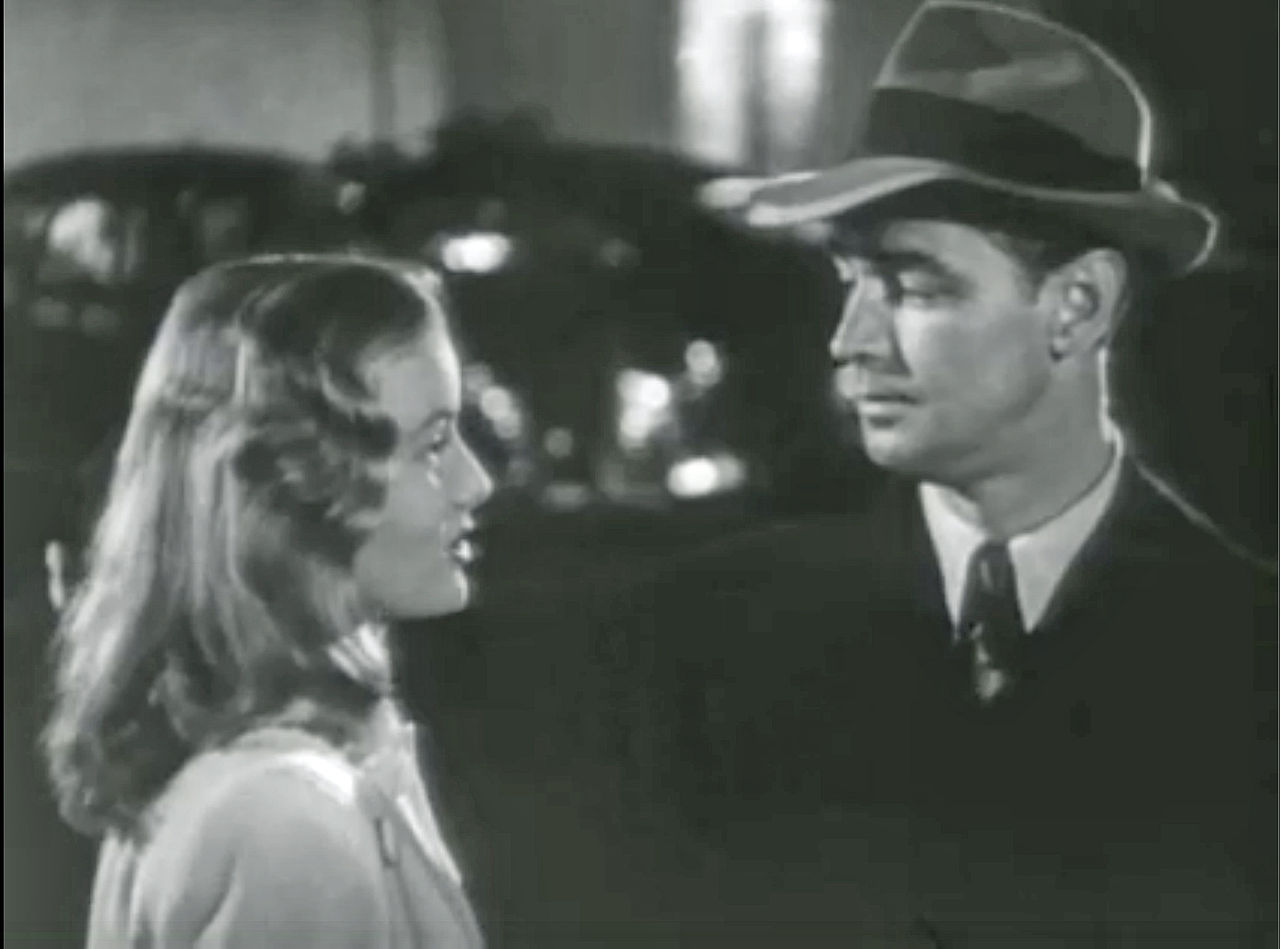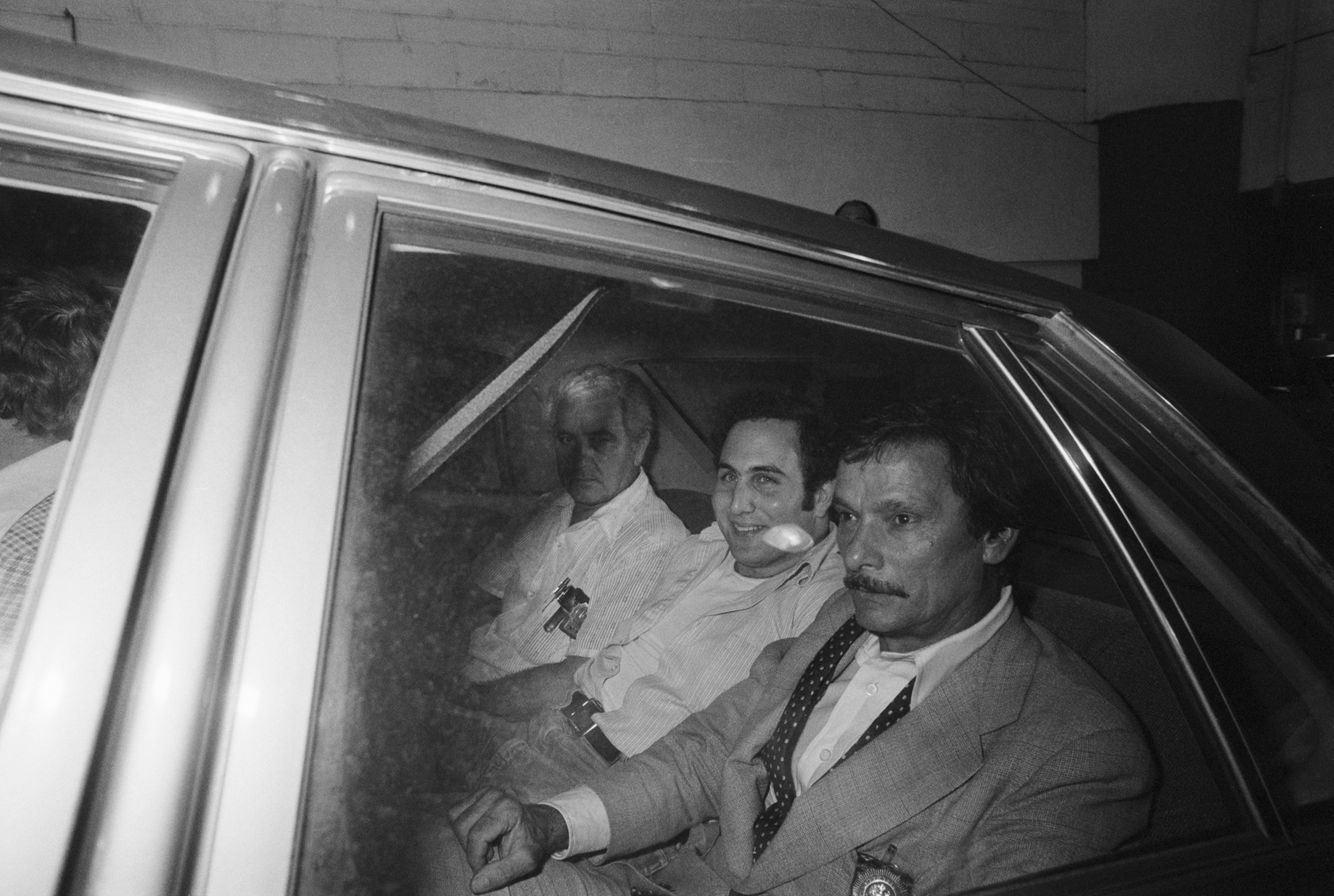Crimes of the Century
TIME magazine has put together a list of infamous crimes that are considered “crimes of the century”—an idiomatic phrase used to describe particularly sensational or notorious criminal cases.
While these are sadly not the only heinous acts of violence America has seen, here’s 20 of the worst crimes of the century, what happened and what the final verdict was.

The Lindbergh Kidnapping
Nearly a century ago, in the middle of a cold winter’s night, a baby was stolen directly from their crib in New Jersey. This wasn’t just any baby, though.
The 20-month-old baby was the son of aviator Charles Lindbergh—American’s great hero who, just five years prior, had become the first man to fly solo across the Atlantic Ocean.
The Lindbergh Kidnapping: The Search
A search of the premises was immediately made and a ransom note demanding $50,000 was found on the nursery window sill.
The search continued throughout the spring, with a manhunt driven by several ransom notes, giving hope that baby Charles Jr. would be home soon.
In April, rumors emerged that a ransom had been paid—but still not child was recovered.
 Unknown Author, Wikimedia Commons
Unknown Author, Wikimedia Commons
The Lindbergh Kidnapping: Recovery
After another long month in agony, the search reached a tragic end.
Baby Lindbergh’s body was recovered by the side of the road, not far from the family’s home.
Sadly, baby Charles tragically lost his life not long after he had been taken, and the entire ransom thing had been an awful game by a criminal looking for a payday.
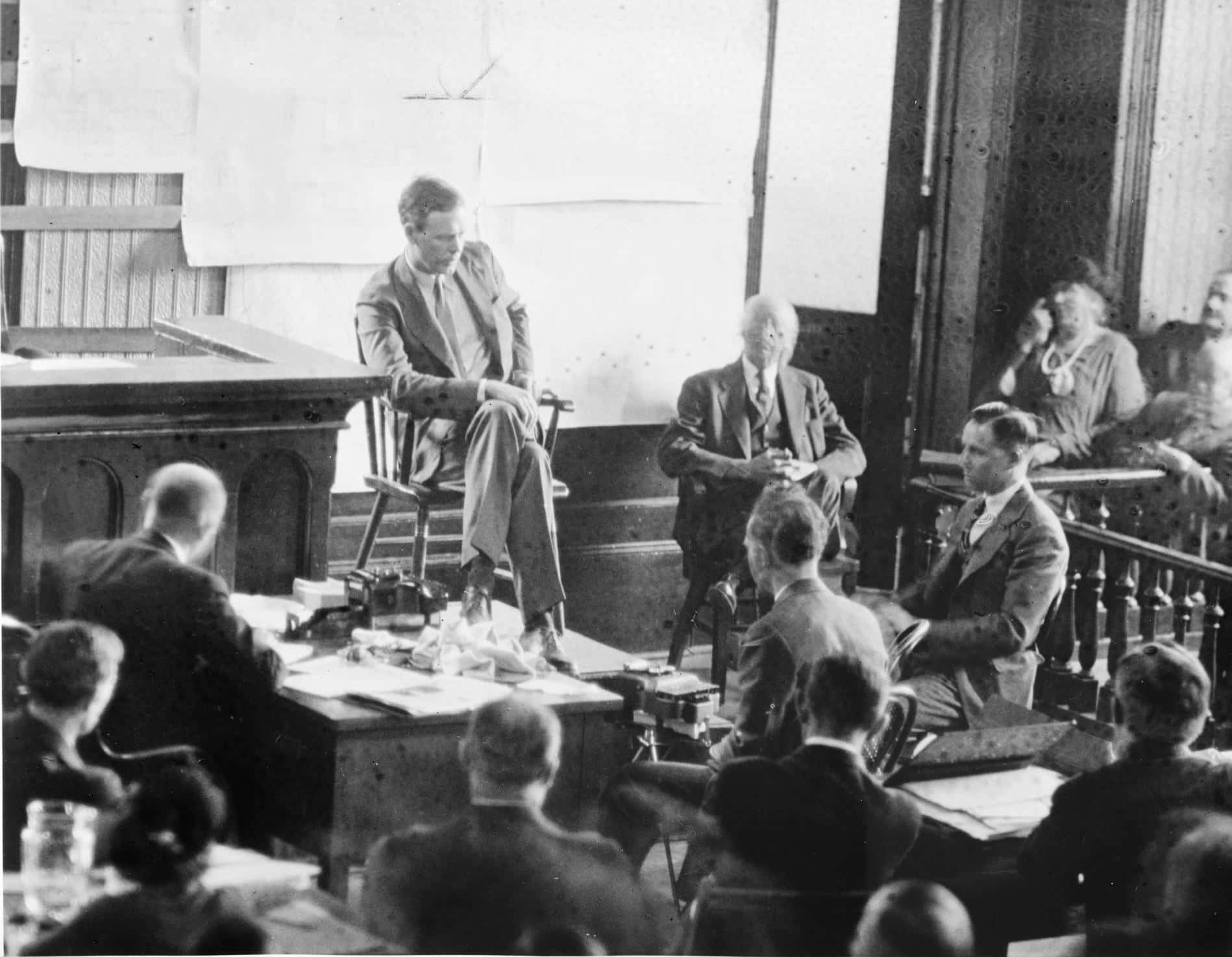 World Telegram staff photographer, Wikimedia Commons
World Telegram staff photographer, Wikimedia Commons
Stealing the Mona Lisa
The Mona Lisa had once been a prized possession of many French monarchs, including Francois I, Louis XIV, and Napoleon.
Leonardo da Vinci spent four years creating her in Florence, but she lived for four centuries in France—that is, until summer of 1911.
Stealing the Mona Lisa: The Act
On August 20, 1911, someone stole the Mona Lisa from the Louvre in France.
As soon as the news broke, the entire nation went into lockdown, closing its borders and putting everyone on high alert.
Several people became suspects, including avant-garde poet Guillaume Apollinaire who then implicated Pablo Picasso. Eventually dropped, but the work was still not recovered.
Fears grew that the treasured Mona Lisa had been destroyed.
Stealing the Mona Lisa: The Recovery
Months later, the Louvre got an intriguing call from the Uffizi Gallery in Florence, claiming they may have found the Mona Lisa.
A man named Vincenzo Perugia had single-handedly stolen the masterpiece and brought it to a local antiques dealer in order to sell it and restore it to Italy. He was hailed as a patriot in Italy and only served a few months behind bars.
On January 14, 1914 the painting was returned to the Louvre.
 Roger-Violett, Wikimedia Commons
Roger-Violett, Wikimedia Commons
The Fatty Arbuckle Scandal
On September 3rd, 1920 a horrific story hit the newspapers. The plotline read about a wild party where an “obese” Hollywood comedy star took advantage of a naïve young actress—severely harming her during a heinous act involving a beverage bottle.
The actress died from her injuries, and her alleged attacker became a front-page criminal.
![Roscoe [Fatty] Arbuckle - 1900](https://www.factinate.com/storage/app/media/historyexpose/2024/8/1/lossy-page1-744px-roscoefattyarbucklelccn2014713222tif.jpg) Bain News Service, publisher, Wikimedia Commons
Bain News Service, publisher, Wikimedia Commons
The Fatty Arbuckle Scandal: The Attacker
The attacker was said to be Roscoe “Fatty” Arbuckle—the first film actor to be paid an annual salary of $1 million.
Arbuckle denied the allegations, continuously insisting he did nothing wrong. But no one believed him. His career instantly plummeted.
 Unknown Author, Wikimedia Commons
Unknown Author, Wikimedia Commons
The Fatty Arbuckle Scandal: The Trial
Arbuckle went through three trials to prove his innocence; all while being hounded by newspapers and morality groups.
His movies became banned in America and Britain, and some people were even calling for him to be executed.
So, what was the verdict?
 Library of Congress, Wikimedia Commons
Library of Congress, Wikimedia Commons
The Fatty Arbuckle Scandal: The Evidence
The woman who brought the charges was a friend of the victim, and she apparently had a record for extortion, racketeering, and bigamy.
As a result, she was not able to testify in court.
She was also not an eyewitness to the alleged crime. So, there was no evidence, and no credibility from the source.
 The Anaconda Standard, Wikimedia Commons
The Anaconda Standard, Wikimedia Commons
The Fatty Arbuckle Scandal: The Verdict
Due to lack of evidence and credibility, Arbuckle’s first two trials ended in mistrials, and the final trial acquitted him of the charges.
Unfortunately, no one forgave Arbuckle.
His career nor his reputation ever recovered. He then struggled with dependency and died in 1933.
 Famous Players-Lasky Corporation, Wikimedia Commons
Famous Players-Lasky Corporation, Wikimedia Commons
The Black Dahlia
On January 15, 1947, a severely mutilated, unclothed body—which was sliced in half at the waist and had a creepy grimace carved into her face—was found not far from Hollywood.
The body had belonged to 22-year-old Elizabeth Short—a young waitress who moved to Hollywood with a dream of becoming an actress.
The Black Dahlia: Name
Reporters gave the woman the nickname, Black Dahlia, which may have been inspired by the recently released Blue Dahlia—a Hollywood noir film about a fighter bomber accused of killing his unfaithful wife.
Short had previously been engaged to a major in the U.
S. Air Force, but he passed two years prior in a plane crash.
The Black Dahlia: Suspects
The case became front-page news, and there was a huge list of suspects and possible motives. The shocking death also brought on various urban legends of the young woman’s moral proclivities, adding to the “Black Dahlia” noir nostalgia.
Unfortunately, the case remains unsolved today, and the morbid story has inspired a large number of movies and novels ever since.
 Los Angeles Police Department, Wikimedia Commons
Los Angeles Police Department, Wikimedia Commons
The Brinks Job
In 1950, a group of 11 men planned and executed a meticulous job to rob the Brinks headquarters in Boston—the home-base of the legendary private security firm.
The job took 18-months to plan. It had a miliary intensity, with an astonishing attention to detail. The men had recreated uniforms to match that of the Brinks guards—a detail many believe was “genius”.
 Dino De Laurentiis Company, The Brink's Job (1978)
Dino De Laurentiis Company, The Brink's Job (1978)
The Brinks Job: The Haul
The men’s intricate planning was well worth the trouble as the job was successful. They managed to haul more than $1.
2 million in cash and $1.5 million in checks and securities—the biggest heist at that time in American history.
However, what goes up must come down. And while the plan may have been perfect—but the people were not.
 Dino De Laurentiis Company, The Brink's Job (1978)
Dino De Laurentiis Company, The Brink's Job (1978)
The Brinks Job: Trouble Among Friends
Authorities spent years trying to figure out who the masterminds were behind this epic heist.
But had never come close.
Eventually though, the group of men had a falling out when one of them, Joseph O’Keefe, felt cheated out of their portion. The other members hired a hitman to finish him off—but that plan wasn’t executed as well as the other one had been. Dino De Laurentiis Company, The Brink's Job (1978)
Dino De Laurentiis Company, The Brink's Job (1978)
The Brinks Job: Confession
The hitman wasn’t successful and the now-wounded O’Keefe decided to take his secrets to the FBI.
By 1957, most of the group had been apprehended and sentenced to life behind bars—well, except O’Keefe, who only got four years.
While authorities got the guys—they did not get the cash. To this day, no one has found the money.
 Dino De Laurentiis Company, The Brink's Job (1978)
Dino De Laurentiis Company, The Brink's Job (1978)
The Lana Turner Affair
In the 1940s and 50s, Lana Turner was one of Hollywood’s box-office queens. Her real life though, was quite scandalous.
Her father, an Idaho miner, was killed after winning a craps game. She also enjoyed hanging out with men of ill repute, and went on to marry seven times.
The Lana Turner Affair: Scandal
One of Turner’s marriages ended in 1957 after she accused him of harming her young daughter from a previous marriage.
Not long after that, she started seeing a man named Johnny Stompanato, a man suspected of mob ties.
But, as you can suspect, that affair did not end well either.
 Unknown Author, Wikimedia Commons
Unknown Author, Wikimedia Commons
The Lana Turner Affair: Johnny Stompanato
When Turner tried to break it off, he grew violent. And on April 4, 1958 the pair got into a heated argument that got so violent that Turner’s now 14-year-old daughter ended up fatally stabbing Stompanato.
The news rocked Hollywood.
 Unknown Author, Wikimedia Commons
Unknown Author, Wikimedia Commons
The Lana Turner Affair: Hollywood’s Reaction
The case became one of the most sensational legal hearings Hollywood has ever seen.
Turner told a riveting tale on the stand about a mother in distress and a faithful daughter who saved her.
The case was declared justifiable homicide—and Turner’s career flourished into the 1980s.
 Unknown Author, Wikimedia Commons
Unknown Author, Wikimedia Commons
The Great Train Robbery
In August of 1963, the Royal Mail train was held up between Glasglow and London by a total of 15 thieves.
The group ended up with 120 bags packed with the equivalent of $7 million—and were then treated like folk heroes by the press.
 Karen Hogan, CC BY-SA 4.0, Wikimedia Commons
Karen Hogan, CC BY-SA 4.0, Wikimedia Commons
The Great Train Robbery: The Job
The job took about 15 minutes.
And while some believe it was executed seamlessly and non-violently, one person was actually hit in the head and sadly never fully recovered from the trauma.
Also, the 15 thieves left fingerprints everywhere—which ultimately led to their capture.
 Spborthwick, CC BY-SA 3.0, Wikimedia Commons
Spborthwick, CC BY-SA 3.0, Wikimedia Commons
The Great Train Robbery: The Capture
Apparently, all 15 robbers were eventually caught. None of whom served more than 13 years for the crime, though.
But one thief in particular became widely known for the heist: Ronnie Biggs.
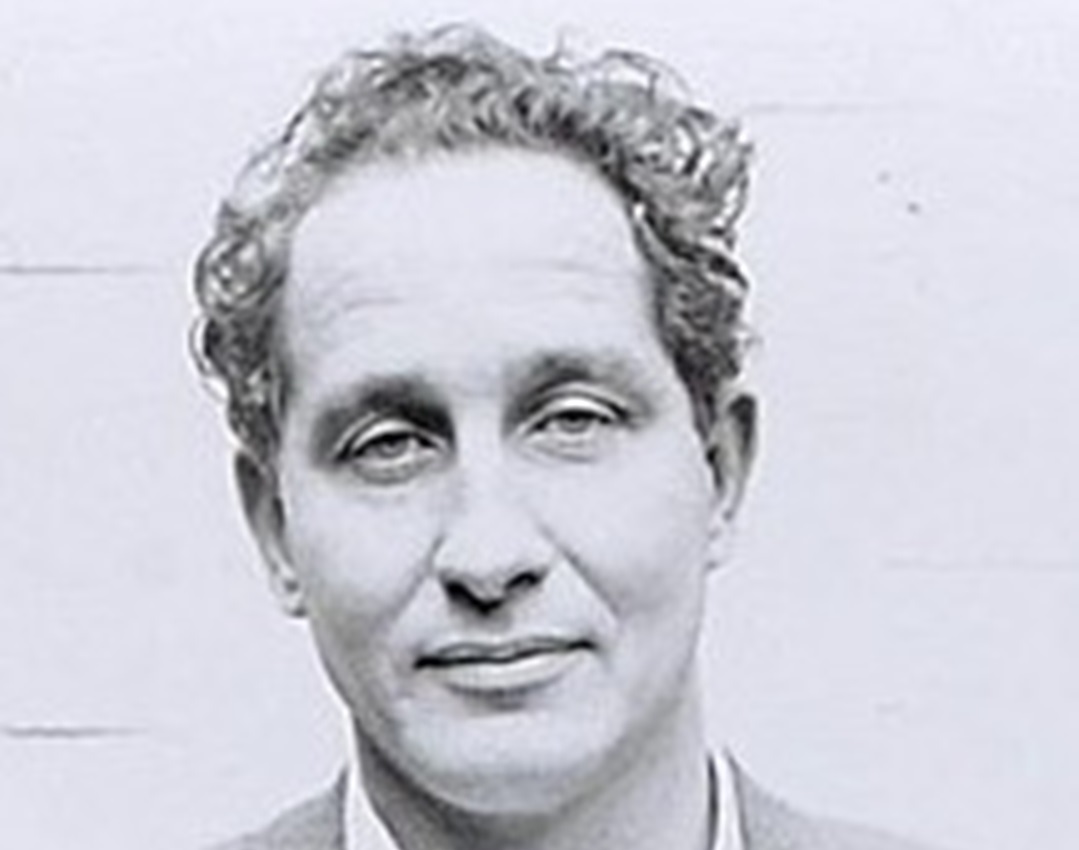 UK Government artistic works, Picryl
UK Government artistic works, Picryl
The Great Train Robbery: Ronnie Biggs
Ronnie Biggs was one of the thieves who got away. Actually, he was caught, but then escaped prison in 1965. He then had his face altered by plastic surgery and fled first to Paris and then to Australia, and finally to Brazil.
His reputation grew: a small-time hood who ended up part of the biggest heist in British history, and being the only one to get away with it all.
The Great Train Robbery: Surrender
In 2001, Biggs surrendered after decades on the run. He had apparently wrote in his Autobiography that he chose to surrender after his health had started failing.
He was released from prison in 2009 on compassionate grounds, and died in a nursing home in 2013.
Richard Speck
This story is what nightmares are made of.
Around 11pm on the night of July 14, 1966, an intruder entered a dormitory in Chicago that housed eight student nurses who all worked at the South Chicago Community Hospital.
The man had been heavily drinking and doing other substances, when he had originally planned a “routine burglary”—however, there was nothing “routine” about this night.
 Dallas Police Department, CC-BY-SA-4.0, Wikimedia Commons
Dallas Police Department, CC-BY-SA-4.0, Wikimedia Commons
Richard Speck: The Act
Speck forced his way into the home and immediately forced all the women together into one room.
He held them there for hours, leading them out one by one, stabbing or strangling each to death.
Intervals of between twenty and thirty minutes passed between each one.
 Fellow student nurse, 1965., Wikimedia Commons
Fellow student nurse, 1965., Wikimedia Commons
Richard Speck: Unknown Survivor
It is believed that Speck knew eight women would be in the home that night. But what he may not have known was that a ninth woman was visiting.
During the initial ordeal, the woman slipped under a bed and stayed hidden the entire time.
After Speck was finished with his eight victims, he left.
The woman stayed hidden until 6:00am the following morning.
 Unknown Author, Wikimedia Commons
Unknown Author, Wikimedia Commons
Richard Speck: Getting Caught
Two days after the horrific incident, a drifter who had been drinking with Speck at a hotel the night of the incident, recognized a sketch in the newspaper of Speck—who was still in the hotel room—and called the authorities.
However, records show the call was made, but the authorities did not follow up.
Richard Speck: The Hotel
The following day, hotel staff discovered Speck in an attempt to end his own life. He was taken to Cook County Hospital where a doctor then recognized his “Born to Raise Hell” tattoo from the newspaper sketch.
Speck was finally apprehended.
Richard Speck: Sentencing
Speck's jury trial began April 3, 1967, where the surviving woman positively identified him with absolute assurance.
In addition, Speck’s fingerprints were found all over the scene.
On April 15th, the jury recommended the death penalty, and he was eventually sentenced to the electric chair.
However, after various appeals for various reasons, in 1972 Speck was re-sentenced to 400-1,200 years behind bars—eight consecutive life sentences.
The Tate-LaBianca Case: Sharon Tate
On August 9th and 10th, 1969 two lives were tragically and brutally taken in Los Angeles. On the 9th, a group of four people horrifically killed actress Sharon Tate, along with four of her friends and the son of her gardener.
Tate was married to director Roman Polanski and was eight-and-a-half months pregnant at the time.
 Unknown author, Wikimedia Commons
Unknown author, Wikimedia Commons
The Tate-LaBianca Case: Tate’s Plea
At the time of the incident, Tate begged one of the female attackers to spare the life of her unborn child, but the woman cruelly responded with, “Look B, I don’t care about you. I don’t care if you are having a baby. You are going to die and I don’t feel a thing about it”.
Tate's blood was then used to write the word “PIG” on the home's front door.
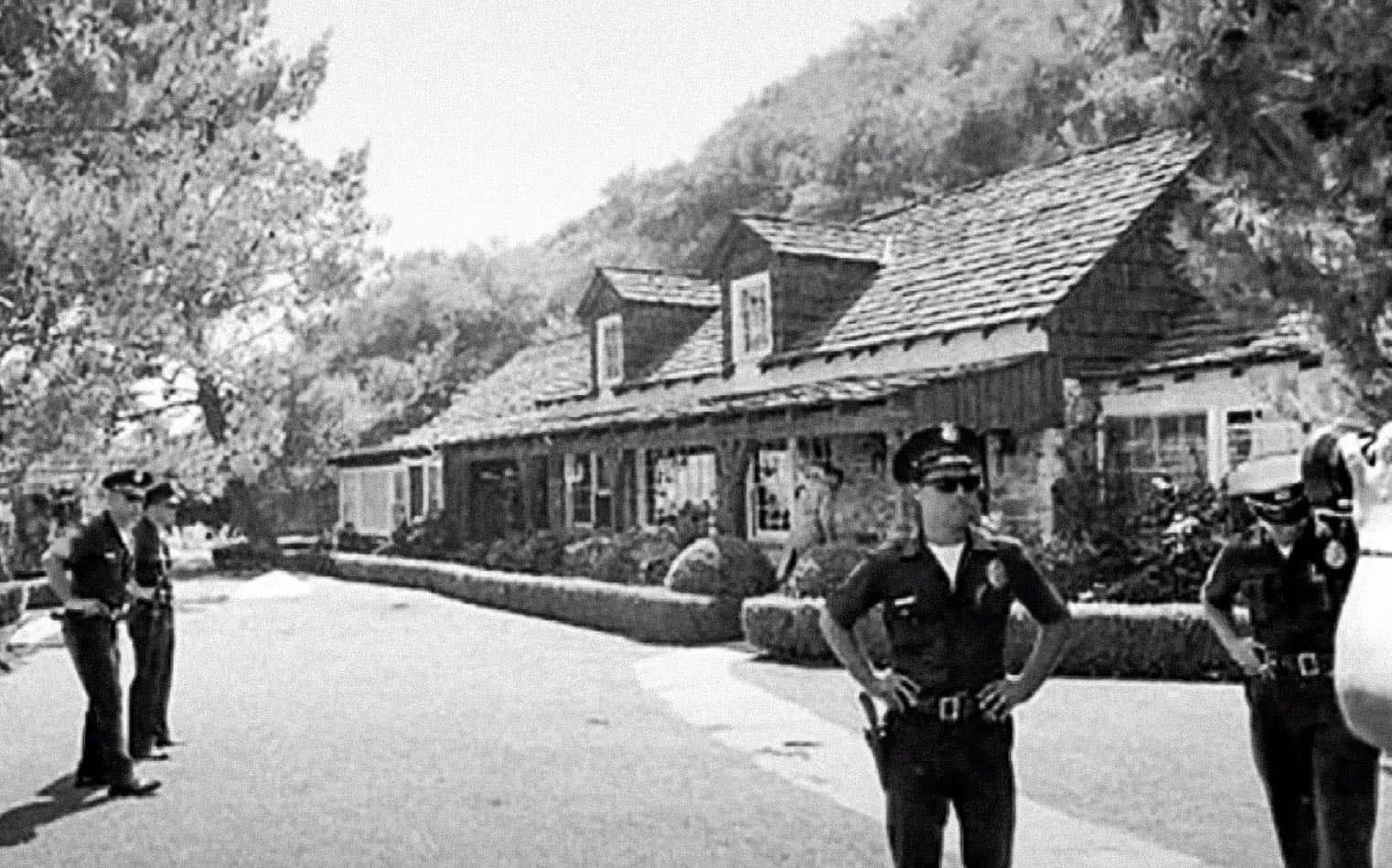 Inside Charles Manson's crazed cult, 60 Minutes Australia
Inside Charles Manson's crazed cult, 60 Minutes Australia
The Tate-LaBianca Case: LaBianca
The very next day, supermarket executive Leno LaBianca and his wife were killed in a similar way—with a fork used to carve the word “WAR” on his stomach left sticking out of his unalive body.
This time, the leader of the group took part in the act—but who was it?
 Inside Charles Manson's crazed cult, 60 Minutes Australia
Inside Charles Manson's crazed cult, 60 Minutes Australia
The Tate-LaBianca Case: Charles Manson
It took nearly five months to track down the people responsible for these unspeakable tragedies.
Eventually, they caught up with Charles Mason and his so-called “family”.
And what they discovered was worse than they could have imagined.
 California Department of Corrections and Rehabilitation, Wikimedia Commons
California Department of Corrections and Rehabilitation, Wikimedia Commons
The Tate-LaBianca Case: Mind Control
Authorities discovered that Manson had his “family” under a terrifying mix of libertine counter-culture and stupefying mind-control—and he sent them out on missions to eliminate those he considered his enemies.
Many of his cult followers—and the people who carried out the acts—were female.
 Inside Charles Manson's crazed cult, 60 Minutes Australia
Inside Charles Manson's crazed cult, 60 Minutes Australia
The Tate-LaBianca Case: Death Penalty
Manson’s trial ended in 1971 with a death sentence that was later vacated by the U.S. Supreme Court's declaration of the penalty's unconstitutionality.
He was then sentenced to life behind bars.
Manson had many heinous crimes under his belt, including another one that happened only two-weeks after these ones, and is known as one of the most infamous serial killers in history.
He died in lockup in 2017 at age 83.
 Inside Charles Manson's crazed cult, 60 Minutes Australia
Inside Charles Manson's crazed cult, 60 Minutes Australia
The Patty Hearst Kidnapping
On February 4th, 1974, 19-year-old heiress, Patricia Hearst—granddaughter of newspaper mogul William Randolph Hearst—was shockingly kidnapped.
Not only that, the people who took her were a band of Bay Area urban revolutionaries—the Symbionese National Liberation Army—and they had an interesting request for a ransom.
 Kingkongphoto & www.celebrity-photos.com, CC BY-SA 2.0, Wikimedia Commons
Kingkongphoto & www.celebrity-photos.com, CC BY-SA 2.0, Wikimedia Commons
The Patty Hearst Kidnapping: Feed the Hungry
The group’s demand for ransom came in the form of charity. They wanted Hearst’s father to “feed all the hungry in California”.
The kidnapping made front-page national news and captured the interest of the American people.
If that isn’t intriguing enough, two months after this, the most shocking discovery of all occurred.
The Patty Hearst Kidnapping: Joining the Fight
A couple months later, in April, the SLA released an audio tape of Hearst herself claiming to have joined the SLA’s fight against the U.S. government.
That’s right, she joined the group who kidnapped her—and not long later, she was seen on camera actively participating in their next stunt.
The Patty Hearst Kidnapping: The Bank Job
Hearst joined the SLA in their infamous bank robbery, and soon enough she went from being a victim of kidnapping to having an arrest warrant of her own.
The group managed to pull off their bank heist and subsequently went into hiding and were on the run for almost a year and a half before authorities caught up to them.
 Hibernia Bank's CCTV system, Wikimedia Commons
Hibernia Bank's CCTV system, Wikimedia Commons
The Patty Hearst Kidnapping: Trial
Authorities managed to capture Hearst and members of the SLA in September of 1975. Hearst was charged with bank robbery, along with numerous other crimes, and was found guilty and sentenced to seven years behind bars.
But, given who she was, her sentencing didn’t stick.
 John Malmin, CC BY 4.0, Wikimedia Commons
John Malmin, CC BY 4.0, Wikimedia Commons
The Patty Hearst Kidnapping: Pardoned
Not long into her sentencing, then-President Jimmy Carter reduced her sentencing and she only served 22-months. Later, Bill Clinton granted her a full pardon on the day he left office.
Hearst went on to live back as a socialite, not a guerilla, and has appeared in a number of John Waters’ comedies.
The Son of Sam
In the summer of 1977, New York plunged into a 25-hour blackout that brought about massive looting and arson.
Among the citizens was the infamous Son of Sam killer, who, after more than a year, was waiting for the opportune time to strike again.
The Son of Sam: Who is he?
The Son of Sam killer had started sending letters to the authorities and to New York Daily News columnist Jimmy Breslin, in which he called himself the “Son of Sam”.
He also wrote of “Papa Sam,” a drinker of blood and a master of Satanic mayhem.
Authorities knew they had a seriously messed up criminal to find—and quick.
 David Shankbone, CC BY-SA 3.0, Wikimedia Commons
David Shankbone, CC BY-SA 3.0, Wikimedia Commons
The Son of Sam: Next Victim
Unfortunately, on July 31st, the Son of Sam struck again, fatally shooting a young woman and her male friend—who ended up blind from the attack.
However, this time, he was seen.
 New York Daily News., Wikimedia Commons
New York Daily News., Wikimedia Commons
The Son of Sam: Caught
A witness on the night of the attack saw a man in the neighborhood removing a parking ticket from a Ford Galaxie.
Authorities were able to track their records and found 24-year-old David Berkowitz—a dweeby, pudgy employee of the U.S. Postal Service.
But there was more to Berkowitz than the authorities thought.
 Vernun Argus, Wikimedia Commons
Vernun Argus, Wikimedia Commons
The Son of Sam: Trained Sharpshooter
Berkowitz was actually trained as a sharpshooter with an M16 rifle in the U.S. Army. He had used a .44 pistol in all of his attacks, ending the lives of six people and wounding seven others.
But who was Sam? Hint, it wasn’t actually his father at all.
The Son of Sam: Who is Sam?
Berkowitz later admitted that Sam was a crabby old neighbor of his.
But Berkowitz was fully convinced that this neighbor was the devil and he transmitted his orders through the incessant barking of his dog, Harvey.
So, basically, the annoying barking dog told Berkowitz to take all those lives.
 Stan Wolfson / Newsday LLC, Getty Images
Stan Wolfson / Newsday LLC, Getty Images
John Wayne Gacy
John Wayne Gacy was, at one point, an “upstanding citizen”. He helped neighbors, he was the chaplain of the Jaycees, and he even dressed up as a clown to entertain kids.
But Gacy also had a dark, sinister side.
 Riverview Release Center staff, Wikimedia Commons
Riverview Release Center staff, Wikimedia Commons
John Wayne Gacy: Secret Crimes
All whilst performing for public audiences as a beloved clown, Gacy was secretly committed heinous and disgusting crimes against dozens of young men and boys— all of which happened inside his ranch-style house.
How did he do this without anyone knowing?
 Waterloo-Cedar Falls Courier photographer, Wikimedia Commons
Waterloo-Cedar Falls Courier photographer, Wikimedia Commons
John Wayne Gacy: Magic Tricks
Gacy would lure his victims to his home and then convince them to put on handcuffs by telling them he would perform a magic trick.
Once his victims were tied up, he would perform awful acts on them as he tortured them before brutally ending their lives.
 Martin Zielinski, Wikimedia Commons
Martin Zielinski, Wikimedia Commons
John Wayne Gacy: Past Convictions
One bizarre component of Gacy’s disgusting life was that he had been previously convicted of sodomizing a teenage boy in Iowa. He was sentenced to ten years behind bars, but only served 18 months.
Even after this, he kept up the ruse of a helpful neighbor and a child-friendly party clown.
That is, until he finally got caught.
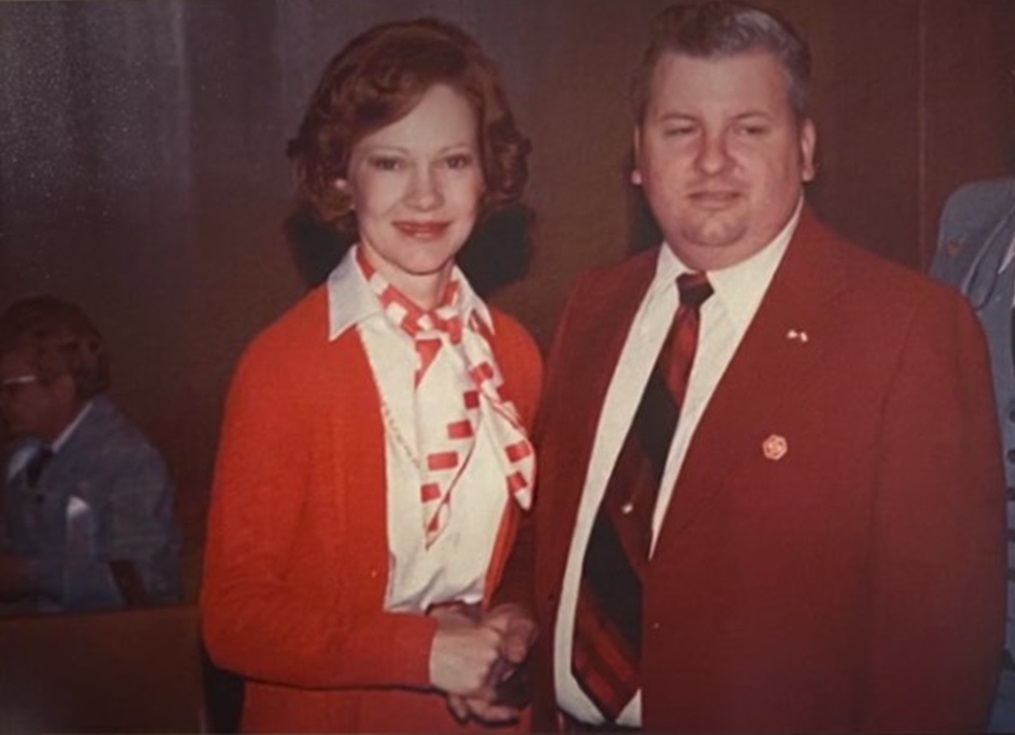 White House photographer, Wikimedia Commons
White House photographer, Wikimedia Commons
John Wayne Gacy: Caught
In December of 1978, Gacy was questioned in the disappearance of a teenage boy, and he ended up confessing—to not only the slaying of the boy, but to over 30 others.
His home was ultimately torn apart in search of his victims, where nearly all of them were found down inside the 40-foot crawl space of his home.
 Des Plaines Police Department, Wikimedia Commons
Des Plaines Police Department, Wikimedia Commons
John Wayne Gacy: Sentencing
Gacy was found guilty, of course, and was sentenced to the death penalty.
New guidelines would ensure that the penalty would not be “cruel and unusual,” however the typical 5-minute lethal injection procedure ended up taking 18 minutes, and Gacy was clearly struggling as he died.
Critics questioned whether his punishment was in fact, “cruel and unusual,” but the victims’ families unanimously agreed: so was Gacy.
 Correctional facility officer Donald Butler., Wikimedia Commons
Correctional facility officer Donald Butler., Wikimedia Commons
Ted Bundy
Ted Bundy was another horrific serial killer who convinced those around him that he was nothing more than a handsome, cultured and charming individual.
That is, until his hands were around his victims’ necks.
Ted Bundy not only brutally took the lives of many people, he did unspeakable things with their bodies, too.
 Florida Department of Corrections, Wikimedia Commons
Florida Department of Corrections, Wikimedia Commons
Ted Bundy: The Devil
Many believe Ted Bundy was the devil reincarnate. After mutilating his victims, he displayed their heads in his apartment and slept with their corpses—at least until decomposition made it unbearable.
He certainly was a sick individual. But when did all this happen?
 State Archives of Florida, Wikimedia Commons
State Archives of Florida, Wikimedia Commons
Ted Bundy: History
Bundy was apprehended back in 1975 on a kidnapping charge.
And by 1977 he was awaiting trial for taking a life—but he escaped.
Then, from January to February 1978, he went on a spree, brutally taking dozens of lives—including a 12-year-old girl.
 Donn Dughi / State Archives of Florida, Wikimedia Commons
Donn Dughi / State Archives of Florida, Wikimedia Commons
Ted Bundy: Luring His Victims
Bundy would fake a physical impairment of some kind to lure his victims into dark parking lots and alleys.
He would convince them he was in need of help, and steer them away from public places.
He then would harm them and take them to a remote location to end their lives.
 DCTWINKIE5500, CC BY-SA 2.0, Wikimedia Commons
DCTWINKIE5500, CC BY-SA 2.0, Wikimedia Commons
Ted Bundy: Capture
Bundy was finally recaptured in 1978 and taken back behind bars. He faced numerous trials for multiple deaths, and was eventually sentenced to the death penalty.
Not long before his date with the electric chair, he confessed to over 30 slayings—including heinous details of what he did with their corpses afterward.
 Florida Department of Corrections, Wikimedia Commons
Florida Department of Corrections, Wikimedia Commons
Ted Bundy: Execution
His confessions didn’t win him any more time, like he had hoped. Shockingly though, he continued to receive support from female “fans” who found his good looks trumped his disgusting crimes. He even got married—and then divorced—while locked up.
Even still, on January 24, 1989, Bundy was executed in the electric chair at Florida State Prison.
 State Archives of Florida, Wikimedia Commons
State Archives of Florida, Wikimedia Commons
America’s Biggest Art Heist
Isabella Stewart Gardner was an heiress and wife of a very rich man. During her lifetime, she bought an extravagant collection of artworks—including a Vermeer ("The Concert") and a Rembrandt ("Storm on the Sea of Galilee"), two certified masterpieces.
When she died, she had very strict orders for what was to happen to her collection.
 John Thomson, Wikimedia Commons
John Thomson, Wikimedia Commons
America’s Biggest Art Heist: The Collection
Upon her demise, Gardner’s collection—which was housed in a small museum in Boston—should have nothing new added to it, nor should any of the art be repositioned.
Gardner passed in 1924, and for decades her wishes were strictly upheld—until one fateful spring night, when both rules were violated.
 Photograph by O. Rosenheim, Wikimedia Commons
Photograph by O. Rosenheim, Wikimedia Commons
America’s Biggest Art Heist: The Job
On March 18, 1990, two men dressed as Boston officers walked into the museum around 1:
00am, tied up the guards, shut off the alarm system, and stole the Vermeer, the Rembrandt, and several other valuable pieces.
The value of stolen goods was estimated at a whopping $300 million—but that’s not even the worst part.
 Federal Bureau of Investigation, Wikimedia Commons
Federal Bureau of Investigation, Wikimedia Commons
America’s Biggest Art Heist: The Recovery
This theft—which is now known as “The Isabella Stewart Gardner Museum Heist,” is still listed as America’s biggest art theft in history.
This is because not only did the robbers make off with 13 valuable works, but nothing has been recovered.
 Federal Bureau of Investigation, Wikimedia Commons
Federal Bureau of Investigation, Wikimedia Commons
America’s Biggest Art Heist: Tragedy
The fear now is that the robbers may not have initially known how valuable the goods were—until after they took them.
The Vermeer is only one of 32 works by the artist in existence and may be worth at least $70 million.
It is so famous that it is unsellable on the market.
Therefore, America’s biggest art heist may be a tragedy so terrible that the thieves had to destroy their incredibly valuable treasures in order to hide their guilt.
 Andre Carrotflower, CC BY-SA 4.0, Wikimedia Commons
Andre Carrotflower, CC BY-SA 4.0, Wikimedia Commons
Jeffrey Dahmer
Jeffrey Dahmer is another horrific man whose name is now synonymous with “monster”. He preyed on young men and boys, and got them to go home with him—usually for intimacy and affection.
But once he got them home, he snuck them substances that altered their reality, had his way with them and then punished them for it—brutally taking their lives.
Jeffrey Dahmer: The Teenager
On May 27, 1991, a 14-year-old victim managed to escape.
He ran into the streets, half naked and incoherent with Dahmer running after him.
Luckily, the authorities saw what was happening. But instead of helping the boy, Dahmer convinced them that he was his boyfriend who had a little too much to drink.
The officers let Dahmer take the boy home—where he then took his life and dismembered his body.
 Revere Senior High School, Wikimedia Commons
Revere Senior High School, Wikimedia Commons
Jeffrey Dahmer: Souvenirs
Dahmer was just as messed up as many of the other serial slayers on this list.
After ending their lives, he dismembered his victims’ bodies, kept their skulls as souvenirs, and stored the rest of their body parts in vats.
He also consumed them. That’s right—Dahmer ate the human flesh (and organs) of his victims.
Jeffrey Dahmer: Caught
Even after the close call with authorities, Dahmer continued his horrific ways.
But on July 22, 1991, his last victim managed to escape.
Over the next several days, Dahmer confessed to slaying dozens of other young men and boys, and harming many others—some as young as 13-years-old.
 Ralf-Finn Hestoft, Getty Images
Ralf-Finn Hestoft, Getty Images
Jeffrey Dahmer: Sentencing
Dahmer was ultimately charged with 17 counts, but that’s only because not all of them could be proven with evidence.
He was also diagnosed with several personality disorders, psychotic disorders, and substance dependencies—all of which helped the defense claim insanity.
Even still, Dahmer didn’t get away with it. After only six months of trials, in 1991, Dahmer was sentenced to 15 consecutive life sentences.
And in 1994, a fellow inmate took Dahmer’s life.
The O.J. Simpson Case
Not many are unaware of the infamous O.J. Simpson case where former NFL player and actor O.J. Simpson was tried and acquitted for the slaying of his ex-wife Nicole Brown Simpson and her friend Ronald Goldman.
The trial is often characterized as the trial of the century because of its international publicity. It was also the “most publicized” criminal trial in history.
 Gerald Johnson, Wikimedia Commons
Gerald Johnson, Wikimedia Commons
The O.J. Simpson Case: The Act
On the night of June 12, 1994, Simpson’s ex-wife and Goldman were stabbed to death outside her condominium in Los Angeles, and Simpson quickly became the prime suspect.
 Los Angeles Police Department, Wikimedia Commons
Los Angeles Police Department, Wikimedia Commons
The O.J. Simpson Case: The Escape
Rather than surrender, Simpson hid in the back of a friend’s vehicle. After authorities were told he had a piece to his head, officers followed the vehicle at low speeds for more than an hour.
The entire “escape” was televised live nationally—seen by about 95 million viewers. And hundreds of Simpson’s fans lined the streets to support him.
He was later apprehended at his home.
 The People v. O. J. Simpson: American Crime Story, FX
The People v. O. J. Simpson: American Crime Story, FX
The O.J. Simpson Case: Trial
The defense team persuaded the jury there was reasonable doubt concerning the DNA evidence. They claimed the blood sample was mishandled by lab technicians and that the case had been tainted by LAPD misconduct related to racism and incompetence.
A bloody glove that was recovered from the scene was said to be “too small” to fit Simpson, and therefore could not have been his.
 Peter K. Levy, Wikimedia Commons
Peter K. Levy, Wikimedia Commons
The O.J. Simpson Case: Ruling
In October 1995, after an eight-month trial, O.J. Simpson was acquitted of all charges. The public’s reaction to the verdict was wild, with many people believing him to be innocent while many others calling for a retrial.
The O.J. Simpson Case: Charged
Although Simpson was acquitted in the criminal case, he was later sued by the victims’ families for wrongful death.
Less than four months later, in 1996, the jury found him responsible for the deaths of Nicole Brown Simpson and Ronald Goldman, and awarded their families $33.
5 million in damages.
He was then sentenced to 33 years behind bars, with a minimum of nine without parole. In 2017 though, he was paroled and released.
The Unabomber
Between 1978 and 1996, Ted Kaczynski took the lives of three people and wounded 23 others with trajectile devices he sent in the mail.
That wasn’t all he did though.
 George Bergman, GFDL 1.2, Wikimedia Commons
George Bergman, GFDL 1.2, Wikimedia Commons
The Unabomber: Decades of Terror
In 1979, Kaczynski snuck a device onto American Airlines Flight 444 from Chicago to Washington D.
C. It exploded, but only caused a small fire.
Investigators tagged him as the University and Airline Bomber as he went on to terrorize the country for nearly two decades—sending various devices in the mail and taunting the media afterward.
However, no one could figure out who he was.
 Evergreen High School, Wikimedia Commons
Evergreen High School, Wikimedia Commons
The Unabomber: Getting Recognized
In 1995, he sent out a 35,000-word manifesto against technology and industrialization, which the Washington Post and the New York Times published in order to prevent him from carrying out his threat to blow up a plane over L.A.
Publishing the manifesto was a good idea though, as someone reading it recognized his ideas.
 U.S. Marshals, Wikimedia Commons
U.S. Marshals, Wikimedia Commons
The Unabomber: Caught
Kaczynski’s own brother recognized his ideas, and gave him up to the authorities. Kaczynski’s decades long stunt was over.
In 1998, he pleaded guilty to all charges and was sentenced to life behind bars. He took his own life in his cell in 2023 after a battle with rectal cancer.
 Federal Bureau of Investigation, Wikimedia Commons
Federal Bureau of Investigation, Wikimedia Commons
JonBenet Ramsey
The terrible, unsolved slaying of a beautiful six-year-old girl in Boulder, Colorado is another heinous crime that is widely known across America.
The child beauty queen was reported missing the day after Christmas in 1996, and to this day no credible suspect has been apprehended.
 CBS, The Case of: JonBenét Ramsey
CBS, The Case of: JonBenét Ramsey
JonBenet Ramsey: Family
Ramsey’s wealthy family became suspects, and for many, remain that way.
A long, handwritten note was found in their home.
And about seven hours after she was reported missing, her father found her body in the basement of their home.
The girl’s body was found with a nylon cord tied around her neck, and a broken skull. She had tape on her mouth and her body was covered in a white blanket.
JonBenet Ramsey: Beauty Queen
Ramsey was a child beauty queen. Her mother, Patsy, had entered her into numerous pageants across America. Due to the nature of these pageants, the public quickly turned their attention to the mother.
It was also speculated that the family had staged the body to cover up what really happened.
 CBS, The Case of: JonBenét Ramsey
CBS, The Case of: JonBenét Ramsey
JonBenet Ramsey: Suspects
In 2002, DNA evidence provided insight to a possible suspect—that was not related to the family.
However, even still, the family members—including the girl’s brother—have all been on-and-off again suspects, though nothing has been proven.
JonBenet’s slaying remains a cold case today.
Columbine Massacre
In 1999, two young students at Columbine High School planned and executed an unthinkable act on their teachers and fellow classmates.
School shootings were already a problem before, but these boys planned theirs to be the worst.
Columbine Massacre: The Plan
According to reports, Dylan Klebold and Eric Harris recorded their plan so the world would know what they were set out to do. They planned to take out 250 students that day.
And while they didn’t reach that number, they still managed to carry out one of the worst school shootings in American history.
 Jefferson County (Colo).. Sheriff's Office, Wikimedia Commons
Jefferson County (Colo).. Sheriff's Office, Wikimedia Commons
Columbine Massacre: The Result
On April 20th, 1999, Klebold and Harris walked into their school and opened fire, taking the lives of 12 people and wounding 24 others.
They then turned their pieces on themselves and took their own lives—all while live on television.
 Seraphimblade, CC BY-SA 4.0, Wikimedia Commons
Seraphimblade, CC BY-SA 4.0, Wikimedia Commons
The Sad Saga of Andrea Yates
In 2011, Andrea Yates, a mother of five who was struggling with severe mental health issues, had been advised not to be left alone with her children.
Against better judgement, her husband left for work, leaving an hour-long gap between his presence and the next caregiver.
In that one hour, Yates performed an intricate and unthinkable act.
The Sad Saga of Andrea Yates: The Slaying
On June 20, 2001, Andrea Yates tragically drowned her five young children in the bathtub in their home.
Shortly after her husband left for work, Yates started with John, Paul and Luke, and then laid their bodies in her bed.
She then drowned Mary, but left her floating in the tub.
When little Noah came in and asked what was wrong with Mary, he saw his mother’s face and ran. Sadly, she caught him and did the same to him.
The Sad Saga of Andrea Yates: Confession
Yates then called the authorities and asked for an officer to come to the home immediately, but would not say why.
Her next phone call was to her husband, asking him to come home too.
Sadly, this all could have been prevented.
 Phillippe Diederich, Getty Images
Phillippe Diederich, Getty Images
The Sad Saga of Andrea Yates: Mental Health
Yates had been severely unwell for quite some time and had already been hospitalized for various concerns related to her mental health. She had already attempted to take her life many times, and had often begged to end her life.
At the time of the incident, Yates was not to be left alone at all, especially with her children.
The Sad Saga of Andrea Yates: Ruling
Yates underwent two trials—the first one rejected insanity as a defense and sentenced her to life behind bars. However, an appeal gave her a second trial, in which she was found not guilty by reason of insanity.
Yates was immediately committed to a mental health facility—where she willingly resides today. She has apparently declined multiple opportunities to be released.







